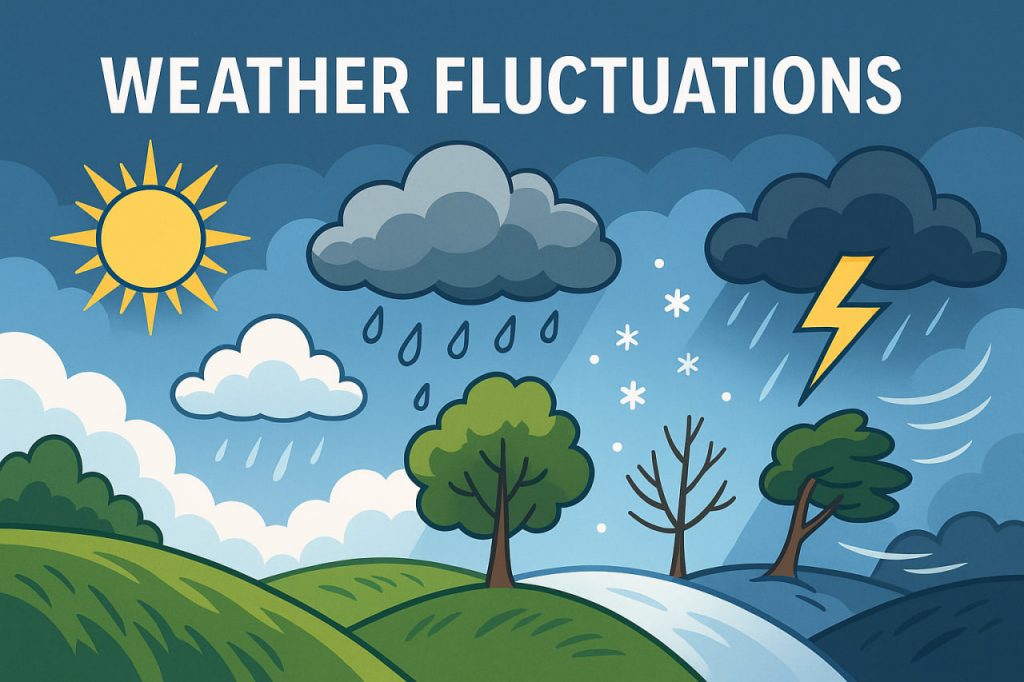Weather fluctuations — sudden shifts in temperature, pressure, humidity, and wind — are natural but increasingly frequent in the modern world. Such changes may occur within hours or even minutes, turning a warm sunny day into a cold stormy one. These rapid transitions are not just inconvenient; they also influence ecosystems, human health, and global climate dynamics.
Why Weather Fluctuates
The main reason for weather changes lies in the movement of air masses in the atmosphere. When warm and cold air fronts collide, the result is sudden temperature drops, strong winds, or precipitation. The Earth’s rotation, ocean currents, and topography also shape local weather patterns. Climate change intensifies these contrasts, leading to more frequent and unpredictable fluctuations.
Effects on the Environment
Plants and animals are highly sensitive to weather instability. Rapid cooling or heating can disrupt flowering periods, migration routes, or breeding cycles. Sudden frosts can destroy crops, while unexpected heatwaves cause forest fires and droughts. Even soil microorganisms respond to temperature swings, which can affect the balance of entire ecosystems.
Impact on Human Health
For humans, abrupt weather changes can cause stress on the body’s regulatory systems. People with cardiovascular or respiratory conditions are especially vulnerable to pressure and humidity fluctuations. Fatigue, headaches, and joint pain often increase when the weather changes sharply. Doctors recommend maintaining hydration, avoiding overexertion, and dressing in layers to adapt to temperature shifts.
Urban and Technological Challenges
In cities, weather instability disrupts infrastructure and transport. Rapid freezing damages roads and power lines, while heavy rains can flood drainage systems. Engineers and urban planners are developing smart technologies and materials that can withstand these extremes — from flexible road coatings to temperature-adaptive buildings.
The Global Picture
Climate scientists observe that the frequency of sharp weather changes is growing due to global warming. The destabilization of atmospheric circulation and polar jet streams causes extreme events such as sudden cold snaps in warm regions or unexpected tropical storms in temperate zones. Understanding and predicting these patterns is one of the main goals of modern meteorology.
Interesting Facts
- The fastest recorded temperature change occurred in South Dakota (USA), where it dropped 27°C (49°F) in just two minutes in 1943.
- Human sensitivity to weather changes is called meteoropathy, affecting millions worldwide.
- Weather satellites provide up to 90% of data used in modern climate forecasting.
Glossary
- Air mass — a large body of air with uniform temperature and humidity.
- Front — the boundary between two air masses of different temperatures.
- Jet stream — fast-flowing air current in the upper atmosphere that influences global weather.
- Meteoropathy — a condition where people physically react to weather changes.
- Climate instability — an increase in frequency and intensity of sudden weather variations.


